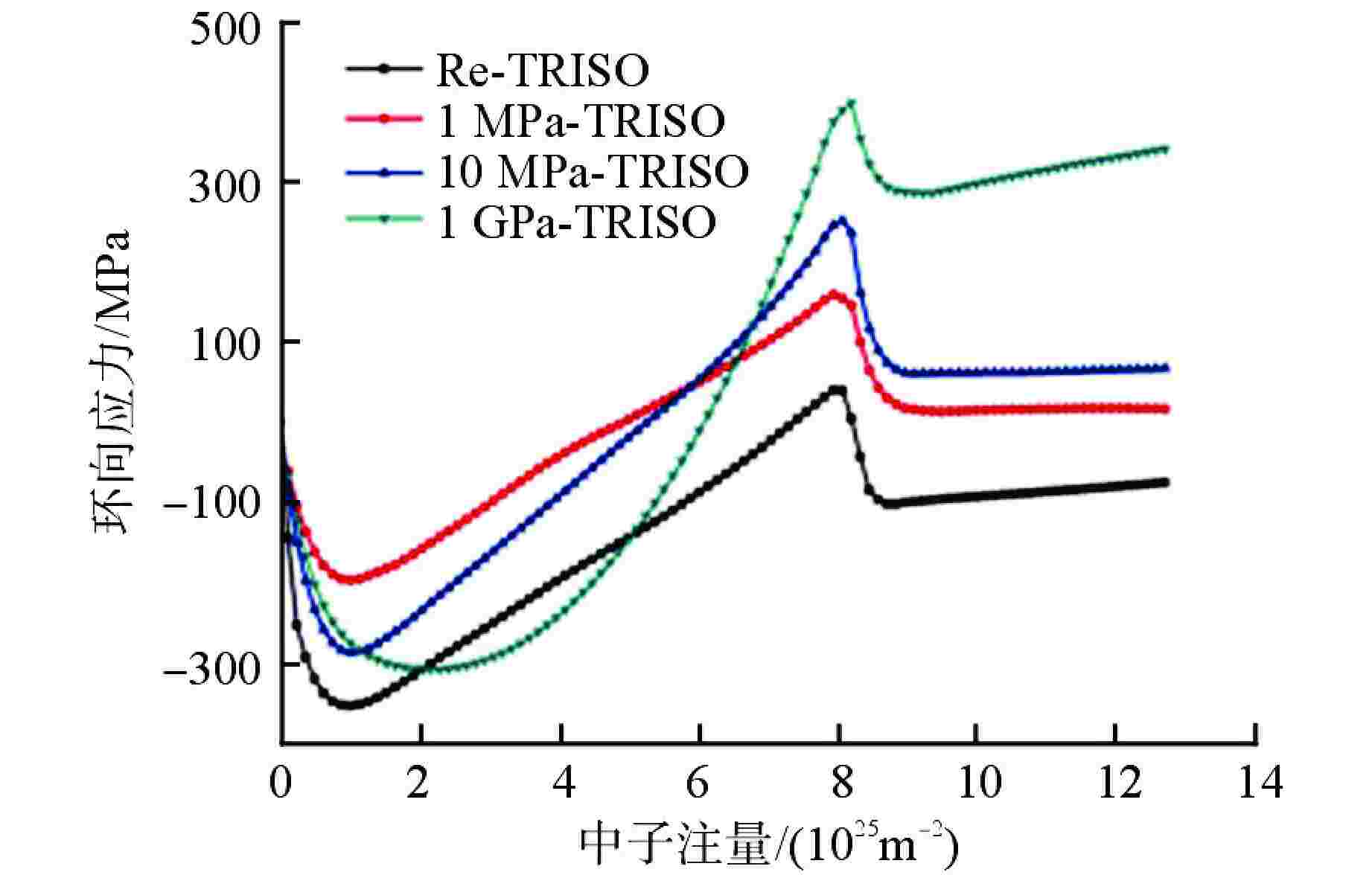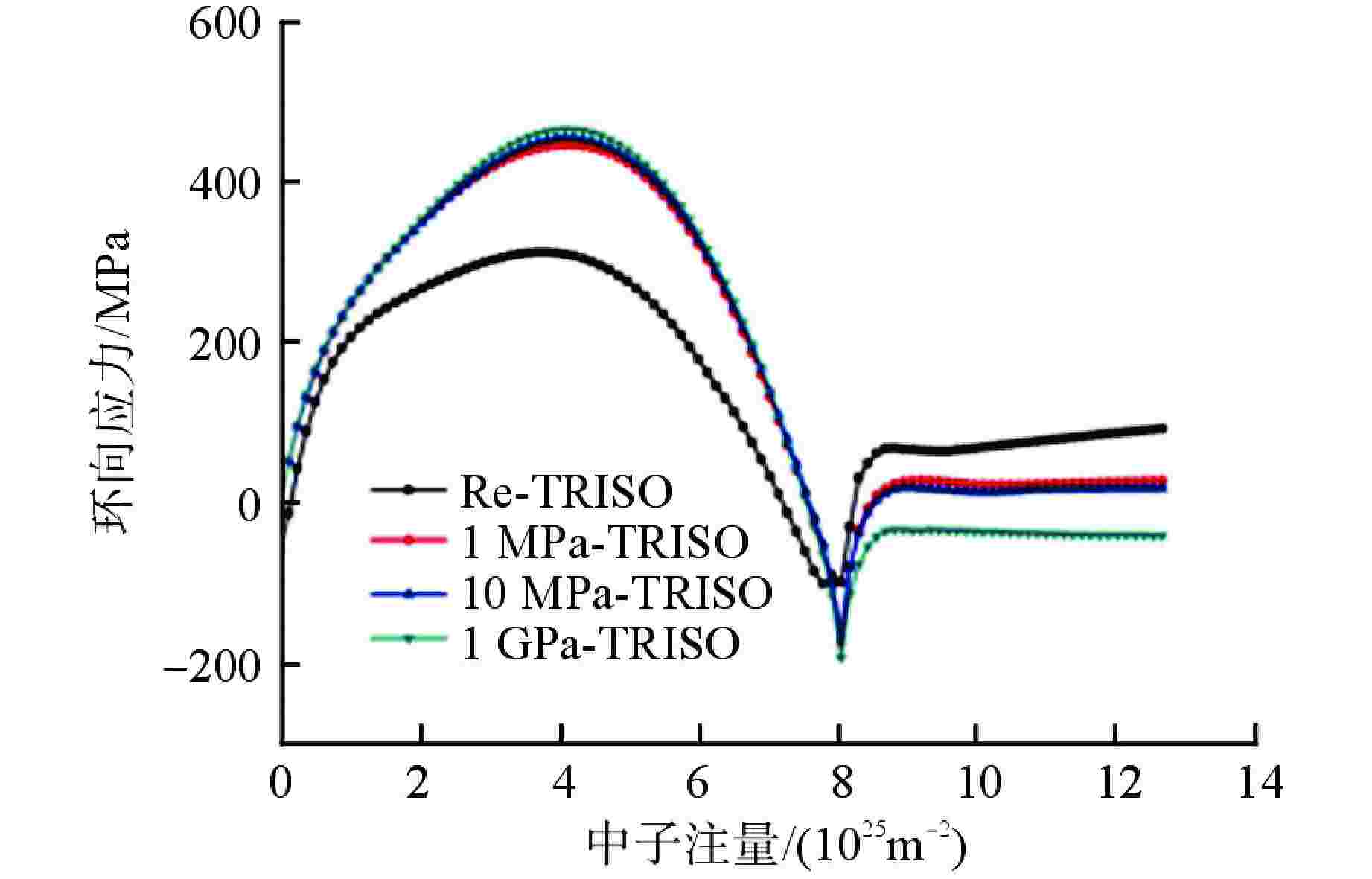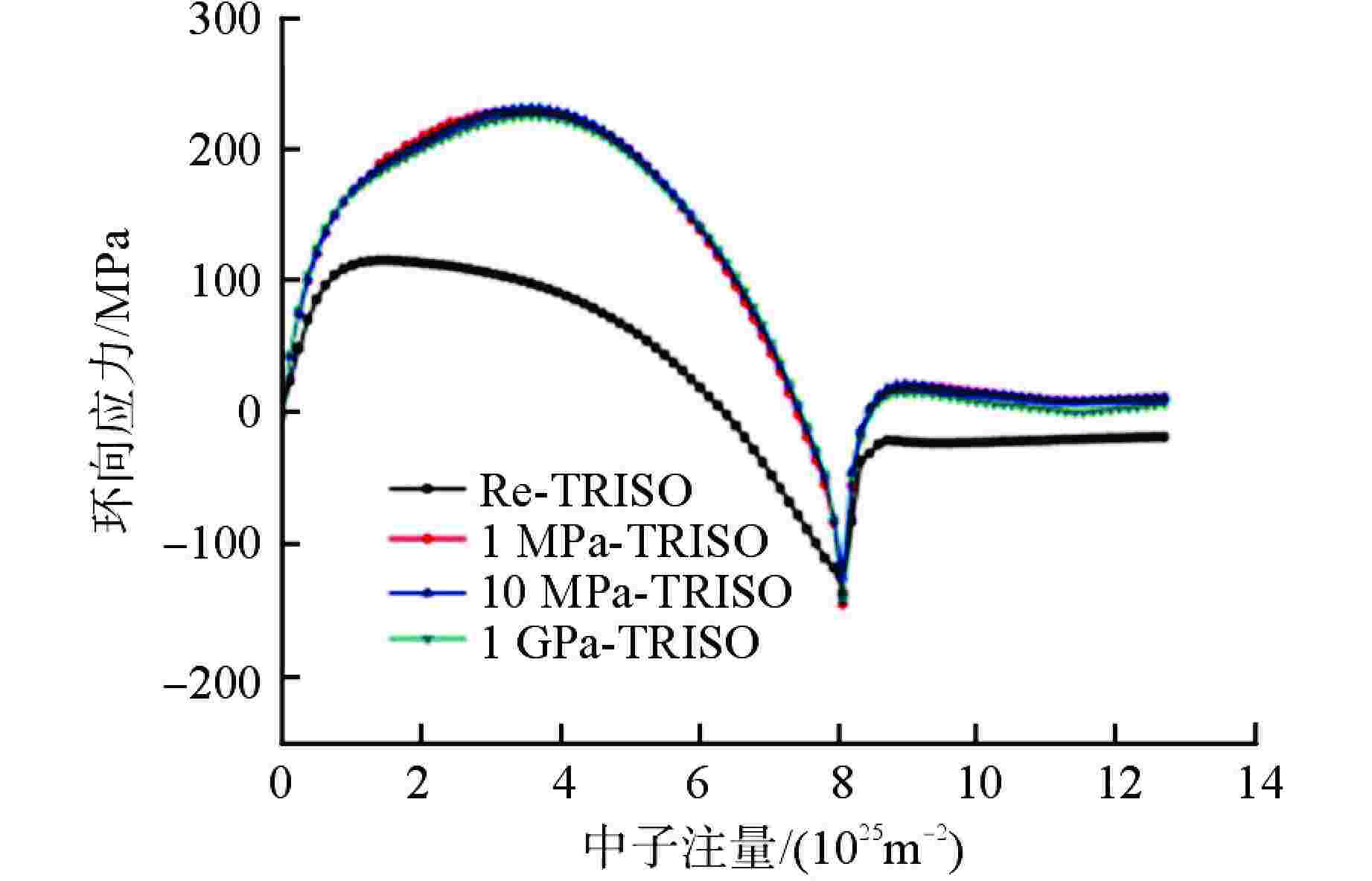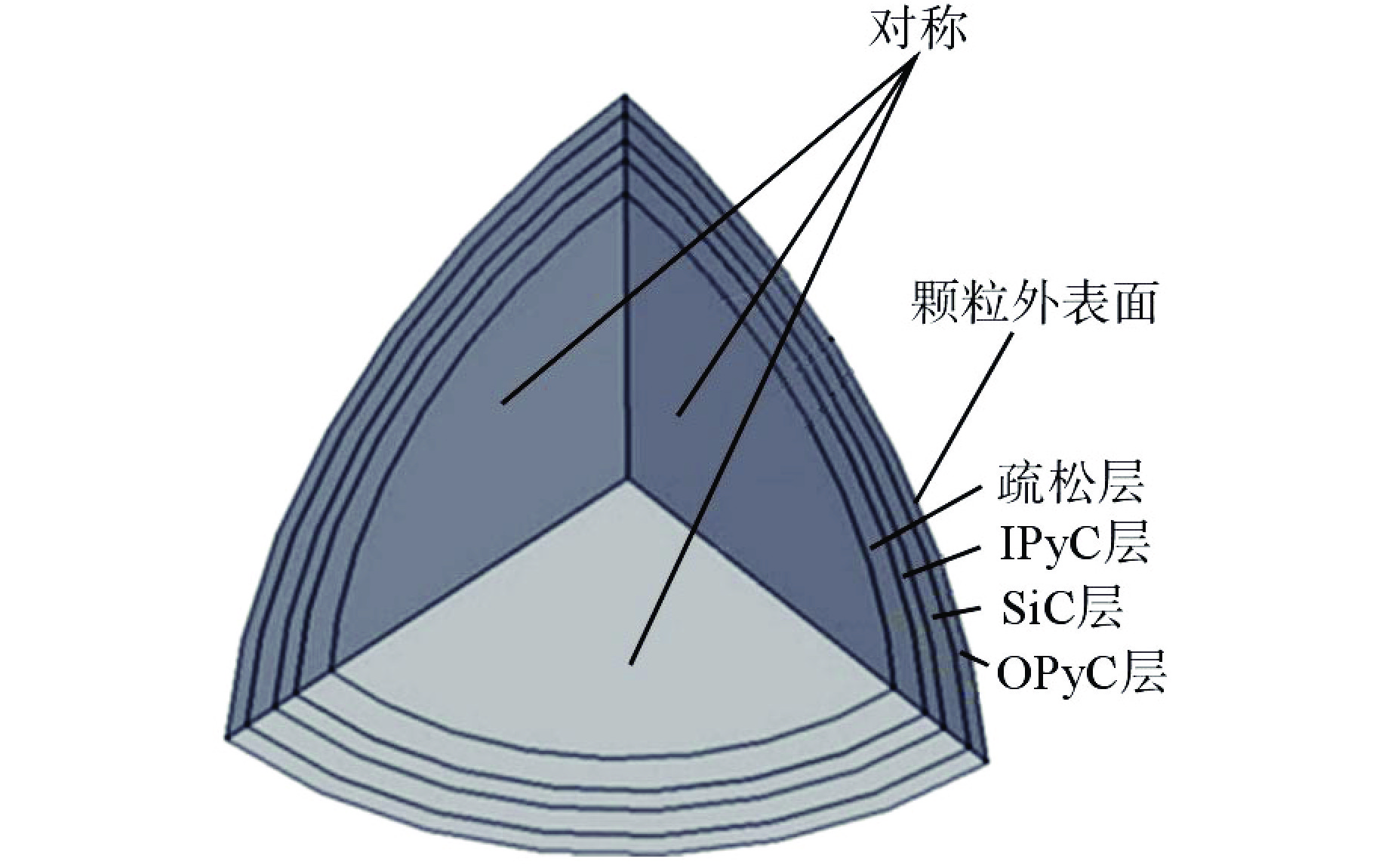In-Pile Performance of TRISO Particle Used Stainless Steel Foams as Buffer Layer
-
摘要: 三向同性燃料(TRISO)颗粒中疏松热解碳层堆内辐照收缩产生间隙后,会导致TRISO颗粒热导恶化。为解决该问题,本文采用泡沫不锈钢替代TRISO颗粒中的疏松热解碳层。对泡沫不锈钢TRISO颗粒的堆内行为模拟结果表明,采用泡沫不锈钢可以避免疏松层堆内密实化,提高疏松层的传热效率,有效降低核芯运行温度;不论采用泡沫不锈钢还是疏松热解碳作为疏松层,内层致密热解碳层(IPyC层)和外层致密热解碳层(OPyC层)的应力均会超过包覆层强度;碳化硅(SiC)层的环向应力随泡沫不锈钢层弹性模量的减小而减小,通过降低泡沫不锈钢弹性模量可以有效控制SiC层应力,保证其结构完整性。因此,应选取气孔率高、弹性模量低的泡沫不锈钢作为TRISO颗粒的疏松层,可在改善热导恶化问题的同时保证SiC层的结构完整性。该研究为TRISO颗粒在工程应用中的优化设计提供了指导。Abstract: Thermal conductivity of TRISO particle deteriorated during in-pile operation due to the shrinkage of the low density carbon buffer layer and the gap appeared. In order to solve this problem, stainless steel foam was used to replace the low density carbon buffer layer as buffer layer in TRISO particle. The in-pile performance of the new type TRISO particle was simulated, and the result indicated that the stainless steel foam can avoid the gap between the buffer and the IPyC layer which can increase the thermal conductivity and decrease the kernel temperature during operation process; at the same time, regardless of stainless steel foam or low density carbon buffer layer used as buffer layer, the stress on IPyC and OPyC layers all exceeded the strength of the two layers. Hoop stress on SiC layer decreased with the elasticity modulus of metal foam, and the stress can be controlled by decreasing the elasticity modulus. To sum up, metal foam with high porosity and low elasticity modulus can be selected as the buffer layer to improve the thermal conductivity and assure the integrity of the coated layer and increase the life time. This study offered the optimization direction of TRISO particle for engineering application.
-
Key words:
- TRISO particle /
- Thermal-mechanical behavior /
- Stainless steel foam /
- Elasticity modulus
-
-
[1] MILLER G. Statistical approach and benchmarking for modeling of multi-dimensional behavior in TRISO-coated fuel particles[J]. Journal of Nuclear Materials, 2003, 317(01): 69-78. doi: 10.1016/S0022-3115(2)01702-6 [2] SEN R S, POPE M A, OUGOUAG A M. Assessment of possible cycle lengths for fully encapsulated microstructure fueled light water reactor concepts[J]. Nuclear Engineering and Design, 2013, 255(1): 310-320. [3] SCHAPPEL D, TERRANI K, POWERS J, et al. Thermo mechanical analysis of fully ceramic microencapsulated fuel during in-pile operation[C]. United States: Top Fuel 2016, 2016. [4] HALES J D, WILLIAMSON R L. Multidimensional multiphysics simulation of TRISO particle fuel[J]. Journal of Nuclear Materials, 2013, 443(1): 531-543. [5] 辛勇,李垣明,唐昌兵,等. 金属基弥散微封装燃料中TRISO燃料颗粒的尺寸优化设计[J]. 核动力工程,2019, 40(2): 176-179. [6] LIU R Z, LIU M L, CHANG J X, et al. An improved design of TRISO particle with porous SiC inner layer by fluidized bed-chemical vapor deposition[J]. Journal of Nuclear Materials, 2015, 467(1): 917-926. [7] BESMANN T M, FERBER M K, LIN H T, et al. Fission product release and survivability of UN-kernel LWR TRISO fuel[J]. Journal of Nuclear Materials, 2014, 448(1): 412-419. [8] NOOR F M, ROSIP N M, JAMALUDIN K R, et al. Effect of sintering temperature on the properties of stainless steel foam[J]. Advanced Materials Research, 2015, 1807(1): 232-235. -





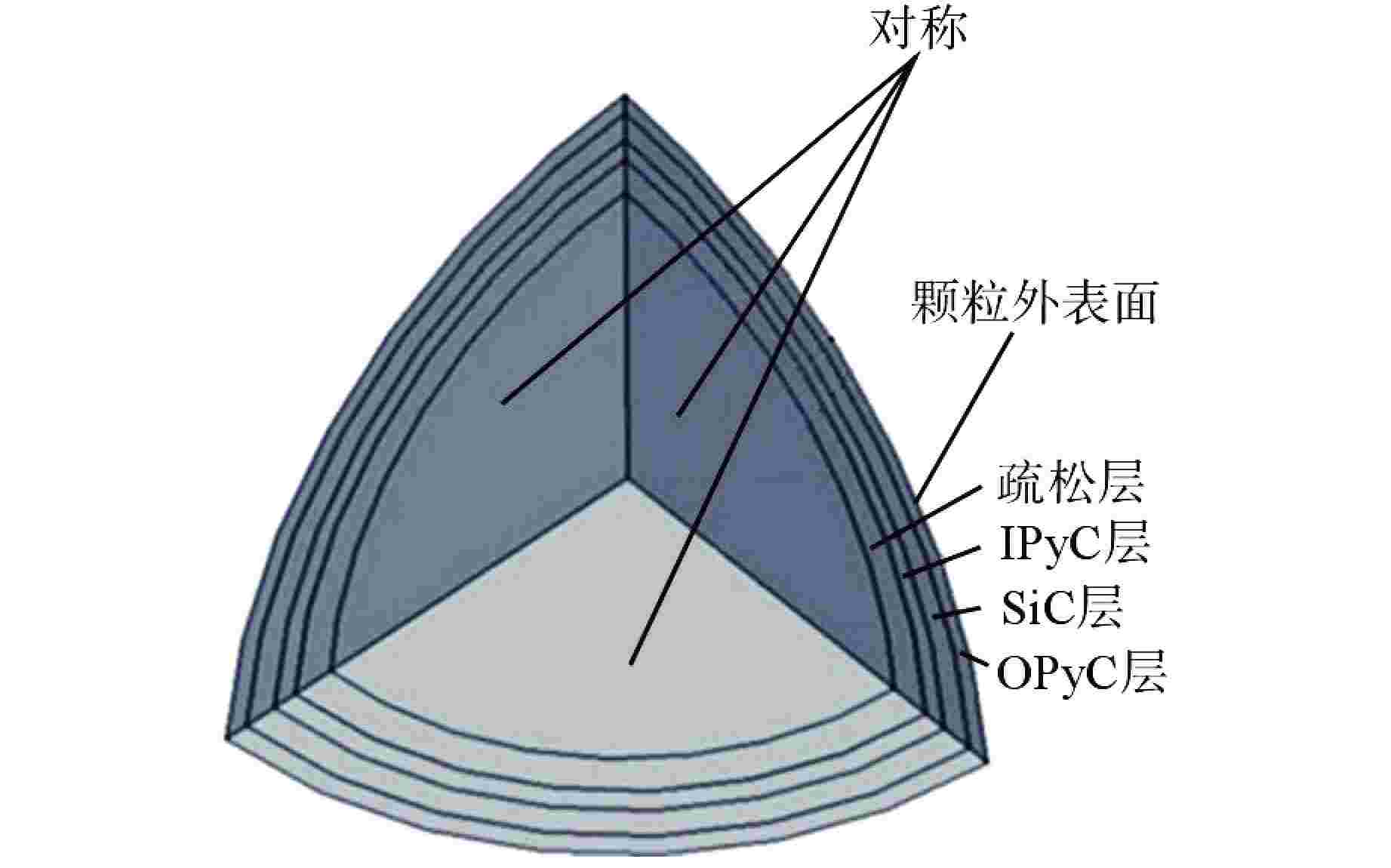
 下载:
下载:


